Tesla Motors Losing More Executives, Company Probably Not Doomed
There’s something about EV manufacturers that elevates the turnover rate of high-ranking employees. It seemed like we reported on Faraday Future losing executives almost daily for two consecutive years, but Tesla now appears to have its own difficulty retaining talent. The automaker lost two of its senior financial executives this month as it prepares to report on the Model 3 sedan’s progress (or lack thereof).
Is this the beginning of the end for the EV manufacturer? Probably not. It’s easy to obsess about Tesla’s status and speculate endlessly on the health of the brand, but the company’s all-important stock price has yet to crash and Elon Musk has promised to remain at its helm for the foreseeable future. However, the firm may need to do some housekeeping to ensure it doesn’t lose the trust of its investors.
Death Comes to the Lincoln Continental?
It’s not something a Lincoln aficionado, or even anyone with a general appreciation for history, wants to hear, but sources with knowledge of Ford Motor Company’s product plans claim the Lincoln Continental is headed for the grave.
Speaking to Ford Authority, the sources claim Lincoln’s full-size flagship sedan won’t see a second generation, with parent company Ford choosing to pull the plug and discontinue the slow-selling model instead.
Noted Diesel Lover Promises 'Practically' One New EV Per Month
Just a week after claiming diesel technology will “ see a renaissance in the not-too-distant future,” Volkswagen Group CEO Matthias Müller said his company is prepared to bestow “practically one new electric model per month” on a world that’s apparently fallen out of love with diesel.
It’s a jarring change of tone from comments made at the Geneva Motor Show, but Müller’s not talking about next month or next year. Once the company’s MEB platform electric vehicles hit full production, he claims, expect the product floodgates to open. We’ve grown properly cynical about lofty EV promises, as well as the public’s supposed unquenchable desire for said vehicles, but Müller insists it’s the real deal.
Backing up the CEO’s claim, Volkswagen apparently has suppliers lined up to make it happen.
Tesla Stalled Model 3 Production Last Month to Get Ducks in a Row
Tesla temporarily stopped production of the Model 3. Considering everyone keeps wondering when the company will finally reach its first-quarter production target of 2,500 units per week, that’s big news. The Tesla faithful will, no doubt, consider the decision another incredibly shrewd move from the geniuses working within the company, while the opposition will claim it’s further proof that the firm isn’t capable of building cars at the scale it has promised.
Sticking with the facts, we knew Tesla had Gigafactory tooling waiting to be shipped from Germany at the start of February. However, the temporary shutdown occurred between February 20th and the 24th — a bit too early for the equipment to have made it stateside. The suspended production also took place at the main factory in Fremont, California, and not the Nevada-based Gigafactory. Model 3 vehicle registrations also dropped significantly in the days following the shutdown.
One Does Not Simply Tell Rolls-Royce How to Sell a Car
Aston Martin is pretty damn pleased with itself, having just debuted a futuristic and luxurious electric car concept in Geneva — one it says will attract the next generation of ultra-well-heeled motorcar buyers.
The Lagonda Vision Concept previews a real-world car scheduled for production in 2021, with another to follow by 2023. Bearing a re-launched brand name long associated with the Aston marque, this Lagonda coddles its passengers in a Blade Runner-esque shell that’s outfitted like one of those sexy, Roger Moore-era James Bond escape pods. There’s cashmere and silk. Savile Row tailors were brought in to handle the upholstery. Quite simply, it’s the future of motoring, Aston Martin claims, so you’d better get used to it.
Filled with unbridled enthusiasm over his new creation, Aston design chief Marek Reichman got a little personal during an interview with Britain’s Autocar. Let’s just say his target, now aghast, is having none of this nonsense.
Volkswagen: Once This Beetle's Gone, It's Not Coming Back
After going from the people’s car to the hippie’s car and, finally, to the car of semi-urban professional couples with no kids, Volkswagen’s retro Beetle has entered the home stretch. Despite a movement within Volkswagen HQ to keep the iconic shape around for a new generation, the German automaker now claims there’s no future for the Beetle.
Yes, once the current model disappears, it won’t crawl back out of the grave as an electric car or any other such thing. Get your tie-dyed shirt ready for the funeral.
Volkswagen Strips Down Its Vizzion, Promises a Semi-conventional Sedan
Volkswagen’s Vizzion of the future — a fully autonomous concept car with an all-knowing hologram chauffeur and suicide doors — just came back down to Earth. The sedan will now start life as a normal car, albeit one with two electric motors and all-wheel drive.
Positioned as the flagship of Volkswagen’s upcoming line of I.D.-badged electric models, the Vizzion is on track to start production in 2022. With this car, VW gains a lower-priced alternative to vehicles like Tesla’s Model S and Porsche’s Mission E.
Retro Is Your Future: Honda Confirms Production of an EV That's Hard Not to Love
Electric vehicles. Yawn, right? It’s easy to be cynical about the high-flying production promises tossed about by practically every automaker, but if the real-life version of Honda’s Urban EV Concept looks half as quirky as the show car, the big H might have a bonafide green hit on its hands.
As the Geneva Motor Show opens to journalists, Honda has announced a production version of the retro-styled hatchback. It turns out CEO Takahiro Hachigo wasn’t lying when he said the Urban EV wasn’t just auto show eye candy.
Yes, There's a Rotary Engine Coming to a Mazda Vehicle Next Year, but It's Not the Main Event
If you’re prone to daydreaming about slinky roadsters and curvaceous coupes powered by a high-revving rotary engine, this news might disappoint.
Mazda, one of a dwindling handful of automakers not in possession of an electric (or even hybrid) vehicle, plans to change that status next year with the introduction of a small battery-powered car. Coming along for the ride — at least in one variant — is a rotary gas engine designed to go unnoticed by the driver.
Steel, Aluminum Tariffs Might Not Happen, Trump Says
As the U.S., Mexico, and Canada enter into the final day of the seventh round of NAFTA renegotiation talks, President Trump is offering his neighbors an incentive for signing a favorable deal.
“Tariffs on Steel and Aluminum will only come off if new & fair NAFTA agreement is signed,” Trump tweeted on Monday morning.
The president’s surprise announcement of tariffs on imported aluminum and steel late last week — 10 percent on the lighter metal, 25 percent on the heavier one — sent automaker stocks tumbling. Hoping to quell fears of new vehicle price increases, General Motors and Toyota released statements claiming the bulk of their aluminum and steel flies a red, white, and blue flag.
Ford to Retool Michigan Assembly in May for Ranger, Bronco
Ford Motor Co. will be temporarily laying off roughly 2,000 hourly employees at its Michigan Assembly and Stamping Plants in May so it can begin retooling the site’s facilities for production of the 2019 Ford Ranger and 2020 Ford Bronco. The location will be idled for roughly five months and Ford wants to make it very clear that these are temporary layoffs.
The automaker said in a notice in compliance with the federal Worker Adjustment and Retraining Notification (WARN) Act that all affected employees will either return to the plant in October or transfer to another factory. Ford also said it would be ending production of the Focus sedan and C-Max on May 7th.
Mahindra ROXOR: It's a Thing
What’s that? You want a Jeep but don’t care for one at its current size? Does a 62 horsepower turbo-diesel engine, four-wheel drive, and front/rear leaf suspension appeal to you? And you have just $15,499 to spend? Does Mahindra now have a deal for you.
Just keep it off-road, mmmkay?
After Falling Out of Love, Porsche's Diesel Divorce Is Now Complete
It always felt little odd whenever a diesel-powered Cayenne sidled up to you next to a stoplight. A Porsche that builds SUVs, we used to mull, and diesels, no less!
The public’s discomfort with a German sports car maker entering the utility vehicle field is long gone, and we can now say the same for Porsche’s short-lived dalliance with diesels. The automaker has stated it’s pulling its last remaining oil-burning models off the market.
A new Porsche is born, cleaner, but perhaps no purer.
The Cost of Saving GM Korea? $2.8 Billion, Report Claims
Amid frantic restructuring designed to keep General Motors’ money-losing Korean operations afloat, the automaker has proposed a $2.8 billion investment, a new report claims.
According to Reuters, a South Korean government official said GM would invest the funds over the span of 10 years, though not all of that money would come from the automaker’s coffers.
Two New Models Coming to Save GM Korea: Report
The home of America’s smallest General Motors vehicles is bleeding sales and cash, forcing the automaker into harsh measures in an attempt to save its South Korean operation. Many fear last week’s plant closure announcement is just the beginning of an eventual exodus from the Korean market. There’s three remaining assembly plants, each sitting on shaky financial ground.
Today brings encouraging news, however. Two reports paint a picture of GM in triage mode, doing everything in its power to stem the bleeding — of both money and customers.
Shockingly, Some Would-be Model 3 Buyers Would Rather Drive a Non-Tesla EV That's Available Now
Despite the fandom surrounding all things Elon Musk, there are still some electric car shoppers who’d rather drive than wait. It also seems that, when weighing a prospective Tesla Model 3 purchase, some consumers are willing to let price sway them to another car with a similar driving range.
None of this should come as a shock to those not immersed in blogs and forums devoted to championing Tesla as the sole agent of change in the automotive sphere, and the only “pure” solution to Earth’s problems. To some true believers, however, these shoppers could be seen as traitors to the cause.
That’s their problem. For General Motors, Tesla’s loss of customers is the legacy automaker’s gain.
Tracking Tesla: As Model 3s Hit the Streets, There's a New Way to Check Musk's Pace of Production
Since beginning production of the Model 3 last summer, Tesla has dialed back production targets like a thermostat in the springtime. The electric automaker’s first goal of 5,000 units per week by the end of the year passed as the champagne corks flew on New Year’s Eve, but by that time Tesla had already pushed it back to the end of Q1 2018.
Amid troubles on the assembly line, that target eventually moved to the end of the second quarter of this year, a goal that still stands.
Just how many Model 3s is Tesla cranking out these days? The company only reports deliveries on a quarterly basis, making it hard to get a firm read on the company’s exact output. One publication hopes to change that.
Ford Focus RS Ending Production As Clouds Gather Over Model's Future
It didn’t enjoy a long life, especially here in North America, and it didn’t make it through that short time span without an embarrassing engine defect, but good luck finding someone who’d turn down a hoon session in a Ford Focus RS.
As the king of all hot hatches, the Focus RS gave enthusiasts a sensible five-door for shuttling their kids to school and the ability to shred four tires into coleslaw on the trip home. Well, get ready to pick up a shovel. The Focus goes into its grave on April 6th, and the model line’s future has never looked shakier.
GM Closes Korean Plant Amid Overseas Troubles; Chevrolet Orlando Dies With It
General Motors has announced plans to close one of its four South Korean assembly plants in an effort to stem a tsunami of red ink.
As it attempts to stabilize (or cut) unprofitable overseas operations — an effort that led to the sale of its European Opel and Vauxhall brands last year — GM will close its Gunsan, South Korea plant by the end of May. That facility, which employs 2,000 workers, builds the Chevrolet Cruze sedan and Orlando MPV, a boxy, three-row vehicle that almost made it to American soil.
High Roller: RR Confirms 'Cullinan' as SUV Nameplate
The rumor of an SUV from one of luxury’s mightiest brands has been kicking around for about three years now. Today, the folks at Rolls-Royce confirmed they will be calling it the Cullinan. Hey, at least it’s better than Urus.
In the spirit of not playing by any rules whatsoever, Rolls is referring to the Cullinan as a “high-bodied car.” Well, then. *adjusts monocle*
Porsche's Unbridled Excitement for EVs Continues to Swell
Porsche, the iconic performance nameplate diving ever deeper into luxury and electrification, once again finds itself incapable of withholding its excitement toward both. Company board member Detlev von Platen claims Porsche is seriously considering increasing the production capacity of its upcoming Mission E model beyond 20,000 annual units and electrifying the Macan crossover.
According to von Platen, initial customer inquiries into the Mission E has been so strong that the brand wants to make sure it can meet demand. Buying habits also give the automaker hope that its customer base is prepared to make the eventual switch from internal combustion to electrically-assisted engines.
“In Europe, around 60 percent of Panamera vehicles were delivered with a hybrid drivetrain,” von Platen said.
Ford Throttles Up Production of Big-buck Expeditions, Navigators, in Bid for Boffo Profits
For an automaker worried about shrinking profit margins, spending an extra $25 million is just fine if it means cranking out 25 percent more high-margin SUVs. And the Ford Expedition and Lincoln Navigator, now minty fresh after years spent withering on the vine, certainly fit the description of “guaranteed cash generator.”
Ford plans to add that sum to the $900 million already sunk into the Kentucky Truck Plant in an effort to boost production of its full-size SUV models, knowing full well Americans buyers will snap them up the minute they roll off the line. Is there a clearer example of an automaker treating SUVs as a license to print money?
Tesla Still Has Tooling For the Model 3 Waiting for Pickup a Continent Away
Tesla claims it’s closing in on its goal to produce 2,500 Model 3 sedans a week, even though the original deadline for that target is a few months past. However, a problem remains. Despite having all the tooling needed to hit its mark, some of the essential components are still in Germany when they should be in the United States.
While the automaker still claims it can reach 2,500 unit per week by the end of March, the new automated system for module production needs to be shipped from Grohmann Automation in Dausfeld, Germany, to the company’s Gigafactory, located outside Reno, Nevada. That’s a long distance to ship a lot of hardware in roughly a month’s time, leaving many wondering if Tesla is about to break another promise to investors.
2018 Mercedes-Benz Sprinter: Vantastically Evolved for Its Third Generation
Nobody knows why the custom van lifestyle ended. Despite the keep on truckin’ imperative, the 1970s ended and took those kaleidoscopic fun-wagons with it. Maybe the Baby Boomers grew up and decided to stop smoking weed in the back of large vehicles with words like “Vandy Apple” painted on the side so they could get a real job and start smoking weed at home.
Perhaps the trend simply passed and foreign-built economy cars were the next must-have item. All we know for sure is that it was a mistake.
Fortunately, vans have only gotten better since the ’70s ended. The objectively perfect minivan had its heyday when leisure travel vans still held a corner of the market. While not so popular anymore, the van’s unparalleled versatility has kept it a viable option for work fleets and individual private owners who want a jack-of-all-trades vehicle in the driveway.
Mercedes-Benz is hip to this, revealing its third-generation Sprinter with all the customizable variables one would expect. However, it’s also adding load of new technologies and hardware as part of the brand’s “adVANce” philosophy. That includes new internet integration, driveline configurations, and a forthcoming electric model. Does this amount to the most exciting model in Mercedes’ lineup?
Lotus Finally Talks Turkey on Upcoming Models - One of Which Could Suck
Lotus is an iconic automaker but, unfortunately, it hasn’t been a profitable one for years.* China’s Geely, which purchased a 51-percent stake in the brand last year, hopes to change that by investing “millions” into its production facilities. With the last factory revamp happening in 2009 to prepare for the Evora, that’s welcome news for Lotus. It also means new models are on the way.
Chief executive Jean-Marc Gales, a man who clearly enjoys his company’s cars, recently said that two new performance vehicles will arrive in 2020 — followed by an (apparently mandatory) sport utility vehicle. While we’re not enthralled by Lotus entering into the already bloated premium crossover segment, we’re hoping it’s willing to provide something different. Gales mentioned the model entering development a little over a year ago, saying “no one makes a lightweight, good-handling SUV. It’s a niche, and it looks well positioned.”
Whistleblowing Tesla Engineers Say Model 3 Batteries Being Made by Hand, Slowing Production, Creating Potential Fire Hazard
Tesla’s Model 3, described by many as a make-or-break product for the EV startup, has had a very slow launch, with production falling far short of the numbers Tesla had predicted.
CNBC is now reporting that, according to current and former Tesla employees, one of the factors in the launch delay is the failure of Tesla’s battery “Gigafactory” in aptly named Sparks, Nevada to come up to speed. Ironically, the highly automated factory apparently needs so much human hand work that Tesla has had to “borrow” dozens of employees from its partner in the facility, Panasonic.
China's Lynk & Co May Get Help From Volvo in Its Westward March
Fresh-faced automotive brand Lynk & CO began selling its first vehicle in China about two months ago. But it has bigger aspirations than procuring a place in Asia’s largest market — it wants to achieve global domination through westerly expansion and is now preparing to take its first steps.
While the goal seems unrealistic for a fledgeling automaker producing only one model, the brand has friends in high places. Volvo Cars, which is also owned by Geely Automotive, may be tapped to assist Lynk in Europe by offering its factory in Belgium and opening up its servicing infrastructure. If so, that would set a precedent for a Volvo-based support network that could eventually extend to North America.
Automakers Claim Robots Won't Steal Any More Jobs - For a While, Anyway
The car industry was one of the first to employ widespread automation as a way to streamline manufacturing. However, plenty of jobs have been handed over to robots since the 1980s. Cashiers, tollbooth operators, librarians, and practically everyone who has worked in shipping has seen some aspect of their job replaced with automation. But automakers now claim the usefulness of robots has reached its peak — at last for the time being.
In the midst of an autonomous revolution where drivers will be eventually be replaced by computer-controlled vehicles, numerous carmakers suggest robots still can’t substitute humans on the assembly line.
Will Light Trucks Turn Around BMW's Sliding Sales?
Bavarian Motor Works has found itself in a situation familiar to most brands without a “full complement” of sport utility vehicles — slipping sales. BMW’s U.S. sales dipped 2.4 percent in 2017, and that was after a 9.5 percent drop in 2016. It cites an inability to supply the region with enough light trucks to meet demand as the primary reason for the sales slump and promises things will change for 2018.
The brand plans to launch the redesigned X4 compact crossover this year and hints that it might update the X5 too. Sales of the X2, which was present at the North American International Auto Show last week, should commence this March. On the other end of the size spectrum is BMW’s all-new X7 — which will become the automaker’s biggest model when it goes into production later this year.
Mitsubishi's Still Hot on Trucks, but Man, That Outlander Sport's Gonna Get Old
As we’ve told you before, Mitsubishi’s acceptance into the massive Renault-Nissan fold spells new opportunities for the struggling brand. Platform and technology sharing, affordably developed new models, no further risk of bankruptcy — the future looks a lot brighter than it did just a couple of years ago.
Among those potential new products is a pickup truck — a segment Mitsu’s courted in the past, with varying degrees of success. Apparently, the brand’s urge to join the growing pickup field hasn’t waned, but the timeline for another new product — a downsized Outlander Sport — now appears less urgent than it once did.
McLaren Confirms SUVs Aren't for Supercar Manufacturers
Let’s take a moment to consider how ubiquitous sport utility vehicles and crossovers have become. They are, quite literally, everywhere, and reason for this is that they’ve morphed into a jack-of-all-trades type of automobile.
The antiquated definition of SUV included words like “rugged” and “off-road.” But modern examples really only need to ride higher than your typical sedan to qualify. That, along with the segment’s current trendiness, has helped to make such vehicles exceeding popular. So popular, in fact, that practically every automaker is trying to build one to improve sales.
This includes supercar manufacturers. Lamborghini intentionally priced the Urus as an “entry-level” model to ensure volume — and you had better believe Aston Martin and Ferrari will do the same with their upcoming crossovers. Porsche has two SUVs and the more-affordable Macan became its best-selling model last year. However, there is one performance brand that says it has no place for such a vehicle: McLaren.
GM's 3.0-liter Inline-six Diesel Bound for Flint Factory
General Motors has a new in-house 3.0-liter inline-six turbodiesel planned for its next-generation full-size pickups, and, while it won’t be available from launch, now we know where it’s being built.
GM’s vice president of global propulsion systems, Dan Nicholson, says the engine — which came as a surprise announcement during the 2019 Chevrolet Silverado’s weekend debut — will hail from Flint, Michigan.
Ford Turns Up the Heat on the Mustang, Confirms New Shelby GT500
Ford Mustang fans won’t have to settle for 526 horsepower for much longer. That’s currently the model’s headiest output, churned out by the 5.2-liter V8 found under the hood of the Shelby GT350.
In 2019, however, a new snake slithers into Dearborn. Rumored endlessly, the Shelby GT500 will return as “the most powerful street-legal production Ford ever,” the automaker claims.
Ford Resurrects the Mustang Bullitt as Film's 50th Anniversary Nears
The first Bullitt go-round was a 2001 attempt to upgrade the Mustang GT with a modicum of extra power and a styling nod to an old movie that couldn’t be more forgettable, were it not for a stellar chase sequence. The 2001-2002 Mustang Bullitt, however, couldn’t do anything about its facelifted 1990s sheetmetal, which hardly asks, “Are you going to San Francisco?”
It was the fifth-generation Mustang’s retro design that proved a far more suitable canvas for Ford’s performance brush. Endowed with a more generous helping of brawn, the 2008-2009 Bullitt was a fitting homage to a certain Dark Highland Green ’68 Mustang 390. Still, all good things must come to an end. Or do they?
If you’ve heard rumors recently, consider this a confirmation. The Bullitt is back, just in time for the 50th anniversary of the Steve McQueen flick that made chassis-bending jumps popular a decade before the Duke boys. Driven onto the Cobo Center stage in Detroit by McQueen’s granddaughter, Molly McQueen, the Sunday night reveal of Ford’s turtleneck-and-sport-coat ‘Stang was a pleasant distraction from the automaker’s incessant future-speak.
Fiat Chrysler to Bring Heavy Duty Pickup Production Back to U.S., Shower Workers With Cash
There’s good news this morning for Fiat Chrysler worker in the United States, and it’s also good news for members of the Trump administration.
The automaker has announced plans to sink another $1 billion into its Warren Truck Assembly plant and bring production of its Ram Heavy Duty models to Michigan from Saltillo, Mexico. At the same time, some 60,000 hourly and salaried workers in the U.S. can expect a $2,000 bonus (paid in the second quarter of 2018) in recognition of “their continued efforts towards the success of the company.” The move also means 2,500 previously unannounced jobs for Michigan.
What’s behind all of this sudden goodwill? Recent changes to the country’s tax landscape, FCA claims.
“It is only proper that our employees share in the savings generated by tax reform and that we openly acknowledge the resulting improvement in the U.S. business environment by investing in our industrial footprint accordingly,” said CEO Sergio Marchionne in a statement.
So, how does this production shuffle play out, and what’s the backstory here?
400 Deaths Per Day: Is India Seeking Automotive Safety in the Wrong Places?
Every year, nearly 40,000 people lose their lives on American roadways. Tragic as that may be, it’s small potatoes when you consider India hovers around 150,000 annual fatalities. While you could attribute the difference to the 1.32 billion people living in the country, the truth is that car ownership in India is far less common than in the United States.
Here, there are about 255 million functioning vehicles, leaving the majority of the population with access to some form of four-wheeled transportation. However, in India, the number is closer to 55.7 million — which only gives 42 people out of every 1,000 access to an automobile.
Confronted with a situation that can only be described as catastrophic, Prime Minister Narendra Modi is seeking to impose harsher penalties for traffic violations and requiring automakers to add safety features to cars sold within the region. While that’s a fine start, it doesn’t address the core issue: a nationwide lack of discipline behind the wheel.
As Pickups Become Family Vehicles, GM Vows to Correct Crew Cab Shortage
When thinking of a four-door pickup dating from before the current century, one envisions work crews heading to a construction or logging site. Now, these vehicles ferry mom, dad, Caden, and Brayden to Lowes.
The transformation of the pickup from utilitarian hauler to plush, well-appointed family ferry has done wonders for truck sales in North America, with automakers giving thanks for the high-margin boost to their bottom line. However, keeping up with changing preferences isn’t always easy.
General Motors knows that, in order to keep up with its rivals, it needs to build many more crew cab versions of its next-generation Chevrolet Silverado and GMC Sierra.
Joint Toyota-Mazda Assembly Plant Headed to Alabama: Report
It looks like Alabama has won out over North Carolina in the battle to secure a massive, $1.6 billion joint assembly plant. The factory, a partnership between Toyota and Mazda (which, as of last summer, Toyota owns a 5 percent stake in), is reportedly headed to Huntsville, Alabama, and should give the smaller automaker the American capacity it needs to boost crossover sales.
Sources tell Reuters that company officials and government representatives will make an announcement today at the future factory site. Not only does the new plant herald lots of new jobs, it also means a new model.
Cadillac Prepping XT4 Production on the Sly at Kansas City's Malibu Plant
General Motors is tooling one of its car plants to build the svelte new Cadillac crossover that’s aimed at fixing the luxury brand’s sales slump in the United States. However, GM is keeping quiet on the move as the XT4’s future hasn’t been officially announced. However, insiders have claimed the automaker has already begun production on test versions of the Cadillac XT4 at its assembly plant in Kansas City.
Cadillac deliveries fell 8 percent last year in the United States and, as crossovers seem to be the sure-fire remedy for every automaker seeking sales, the XT4 could be a godsend. That blessing isn’t isolated to North America either. Adding the more-affordable crossover to the company’s Chinese lineup is equally important.
After a Decade's Absence, the Silverado's Going Big Again
An ill wind blew through Detroit late last decade, prompting all domestic automakers to shed excess weight in order to keep their heads above water. In some cases, automakers shaved off long-running brands like an unwanted hair. Models disappeared, while some prestige nameplates snapped up years earlier went out to the yard sale plastered in discount stickers.
A less flashy side of the recession-era cost-cutting involved the elimination of certain automotive niches. One, General Motors’ medium-duty truck line, failed to find a buyer before bankruptcy tipped GM’s hand. The unit didn’t make it out of the recession alive.
Well, now it’s back. GM has announced the Chevrolet Silverado line will no longer stop at the 3500HD model, and that our first full glimpse of the new medium-duty truck line will come in just two months.
As Tesla Model 3 Reservation Holders Wait (and Wait and Wait), GM Says It'll Play Nice
The number of people willing to plunk down a $1,000 deposit for a Tesla Model 3 currently stands at about 455,000. In the third quarter of 2017, Tesla delivered 220 units of its smallest and most affordable electric car. Last quarter, some 1,550 buyers took ownership.
If it looks like it’s shaping up to be a long wait for the newest reservation holders, you’re right. Tesla claims it has succeeded in working out some of the issues hampering production at its Fremont, California assembly plant, but the pushed-back ramp-up of Model 3 production means some reservation holders won’t see their new car this decade. Meanwhile, you can not only walk into a General Motors dealer and order a Chevrolet Bolt today, but you can expect delivery well before the 2020 election campaign gets into full swing.
Is GM planning to exploit its competitor’s production woes? Not us, the automaker claims.
Tesla Moves the Goalposts Again as Fourth Quarter Model 3 Deliveries Fall Short
To hear Tesla explain it, the fourth quarter of 2017 was a boffo month for the company, with record deliveries and a new product that’s really hitting its stride.
It’s true that 1,550 customers took delivery of a Model 3 in the past three months, after the previous quarter saw just 220 of the lower-priced electric sedans roll into driveways. Overall deliveries rose 9 percent from Q3, for a tally of 29,870 vehicles. It sounds good, but the company, like before, still isn’t making enough Model 3s.
As it continues working through supply and assembly line issues, Tesla has pushed back its goal for 5,000-vehicle-a-week Model 3 production for the second time.
Ford Kiboshes the Fusion's Redesign: Report
Everyone who’s excited about the next-generation Ford Fusion, take one step forward.
Not so fast, guys.
A new report lends weight to rumors that Ford Motor Company isn’t all that enthused about letting its passenger cars wither on the vine while buyers look elsewhere for riper, fresher fruit. Fruit with a cargo bay, to be clear. It seems the Ford Fusion’s redesign program is now off the table, turning the model’s future into a giant question mark.
Death becomes Fusion?
QOTD: Who Will Be First Against the Wall?
So dawns a new year, ripe with promise and expectation. Millions of babies will draw their first breath in 2018, and those babies’ parents, aunts, uncles, or grandparents will drive off in 16 million or so new vehicles over the course of the coming year. In the U.S., of course.
Unfortunately, to keep the automotive herd healthy, the weakest will have to die. And in 2018, some vehicle nameplates will discover their lifespan has a definitive end point.
UAW Prez Gets It All Off His Chest, Slams Ford Motor Company
United Auto Workers president Dennis Williams, due to retire in June, isn’t letting Ford Motor Company off the hook for its recent decision to send production of a key product south of the border. Actually, as union heads are wont to do, he’s not letting his government off the hook, either.
The question Williams would like Ford CEO Jim Hackett to answer is: what Mexicans are going to buy an electric Ford?
Will They or Won't They? Questions Remain About Silverado/Sierra Production in Oshawa
General Motors is spending billions to upgrade certain factories, prepping them to build the next-generation Silverado and Sierra. As part of a four-year contract agreed to in September 2016, $310 million was invested in Oshawa’s so-called consolidated line so that it could handle truck production.
Now, Automotive News is reporting that while the Canadian plant may indeed be building trucks, it won’t be the snazzy new ones set to hit dealer lots for the 2019 model year. Instead, Oshawa will simply paint and perform final assembly of the outgoing 2018 trucks.
Here Are the Models That Won't Be Returning for 2018 (Cue Sentimental Video)
Nothing lasts forever. Seasons change, fashions go out of style, and our fleshy bodies wither like a banana left on a radiator. It’s an inevitability. Likewise, automakers have to change their lineups to suit consumer demand — resulting in the annual discontinuation of a handful of unfortunate automobiles.
Still, for every model an automaker has birthed into existence there is someone out there who loved it, even if it it happened to be a rolling pile of garbage. There are car clubs and forums devoted entirely to historically unpopular models like the Cadillac Catera and Pontiac Aztek. Someone cared for those cars and probably hurt when they learned they wouldn’t be on the market anymore. With that in mind, we’d like to take time to honor the vehicles that won’t be returning for 2018.
As Spartanburg Slowly Births the BMW X7, an Ever-growing Pool of Buyers Awaits
It certainly feels like BMW is taking its sweet time getting the full-size, three-row X7 to market, but the automaker assures us it’s almost here. Announced yesterday, pre-production models are now rolling off BMW’s Spartanburg, South Carolina, assembly line — a major step in a product timeline that began in 2014.
Offering up an all-important third row and front end styling that’s sure to spark debate (this year’s X7 iPerformance concept set a high bar for controversy and grille size), the production model should be ready for a late 2018 debut. In the meantime, certification drudgery and copious amounts of hot and cold weather testing awaits.
As the sole member of the Big German Three without a three-row SUV (SAV in BMW parlance), the X7 is a much-needed vehicle, and not just because the automaker wants more high-margin vehicles to fund its electrification efforts. True, the new car market is contracting, but big premium utility vehicles sell.
Sick of Electric Cars? Morgan Green-lights Production of One You Might Not Hate
To some, the only thing that beats electric vehicles for soullessness is those pesky autonomous vehicle people who can’t drive adore so much. Morgan, the quirky British automaker best known for giving wood construction and wire-spoke wheels an automotive toehold in the 21st century, doesn’t do soulless.
Surely the company’s EV3, now confirmed for production next year, warrants a look. This isn’t your average Leaf, Bolt, or Model S.
From the VIN Docs: 2019 Chevrolet Silverado Keeps Its Old Sibling Around; GMC Sierra Does the Same
Just like Ram’s revamped 1500, there’s an all-new Chevrolet Silverado 1500 and GMC Sierra pickup lying in wait for the 2019 model year. And, also like the Ram, General Motors plans to keep an old version of its full-size truck kicking around for buyers not interested in something new.
The news comes by way of GM’s Vehicle Identification Number (VIN) decoder document, recently submitted for 2019 model year vehicles. In the GM truck stable, it isn’t just the Silverado line that’s getting a new addition. GMC wants some of the same old-truck action Chevy’s having.
Good News, America - You've Been Chosen to 'Physically Interact' With the Polestar Brand
Lordy, PR-speak can be offputting. Nevertheless, the newly single Polestar — cast off from Volvo Cars to become its own electrified performance brand under the Geely corporate umbrella — is heading straight to the United States.
The U.S., not surprisingly, was chosen as an initial launch market for the brand, along with China (every electric car maker’s dream market), Germany, Norway, Sweden, and the Netherlands. What form will the rollout take? Let’s just say there’s going to be a lot of interaction. Physical interaction.
Have You Driven a Lately? Production of Ford Fusion May Move to China
It’s no secret that the American buying public shuns four door sedans as if they were an especially virulent leper. Through the first 11 months of this year, the segment is off by over 300,000 units. Almost every car is down, even the spanking-new Honda Accord and Toyota Camry.
Reuters now reports that three of its sources claim Ford plans to consolidate global production of midsize sedans in 2020. The cars will be built in China and shipped to the United States and Europe.
Tennessee is Likely Locale for Volkswagen's New EV Factory
Last month, Volkswagen global brand head Herbert Diess said that Chattanooga would be the likely location for the company’s new electric vehicle plant. But he was also careful to specify that VW had made “no formal decision” on the matter.
While it’s always best to wait for the press release to say anything definitive, the automaker has begun posting openings for specialized positions that would relate to its upcoming MEB platform in Tennessee. Perviously, the automaker had only said it intended to build MEB vehicles at its plant in Zwickau, Germany, beginning with the I.D. hatchback model in 2019. It also mentioned it was planning a facility in China while the American site was still under consideration.
General Motors Eyes Carbon Fiber Beds for Future Pickups
General Motors, the company that ran a campaign criticizing Ford for moving away from steel on its F-Series, is expected to implement carbon fiber in the beds of large pickup trucks within two years. Hopefully, the wait gives consumers time to forget some rather negative ads that bemoaned the use of aluminum for its high repair costs and chance of deformation in an impact.
Carbon fiber is ridiculously strong and should hold up in any side-by-side impact test against aluminum. That is, until you start considering price. Carbon fiber costs substantially more to manufacture, form, and fix than either steel or aluminum. That’s probably why GM plans to limit its usage to only highest trim levels, at least until it can figure out a way to keep production costs down.
Michigan to Mexico: Ford's Upcoming Electric Crossover Moves House
In public, automakers talk a great game about the industry’s electric future. The money poured into the development of electric vehicles is necessary, they say, in order to stay competitive in a changing marketplace. It wasn’t long ago that Ford claimed 100 miles of range was just fine for an EV model; not long after, following the introduction of the 238-mile Chevrolet Bolt, it announced the development of an EV crossover with far greater (300-mile) range.
Whether or not electric power becomes the dominant propulsion source in the United States remains to be seen, but no automaker can be seen resting on its laurels, shunning the most hyped technology. That doesn’t mean a company can’t be realistic about it, though.
Ford’s electric crossover, expected to roll out of Michigan’s Flat Rock assembly plant in 2020, will instead roll out out of a factory in a much warmer (and cheaper) locale.
Bummer: BMW Needs to Build a Lot of Large, Powerful Vehicles Before It Can Go Green
Because large, powerful vehicles surely play second fiddle to self-driving technology and electric powertrains, right? That sentiment might not hold true in the minds of driving enthusiasts, or even the people in charge of building those vehicles, but that’s the direction the industry’s headed. Greener. Smarter. More soulless.
At BMW, the company’s plan for a cleaner future comes with a steep price tag. In an odd twist, the cost of developing new technologies just might make life more enjoyable for driving enthusiasts in the near future.
The 1990s Return at Toyota; Automaker Prepares to Double Up in a Single Segment
What’s stopping Toyota from fielding more than one vehicle in a single class? Answer: absolutely nothing, assuming there’s sales to be had.
After unveiling three crossover concepts over the course of the calendar year, the automaker, not unsurprisingly, now says it’s going to go ahead and build one. Sure, the body might revert to something a little less showy, but the decision means Toyota diehards will soon gain more choice — and the opportunity to pass over a vehicle many reviewers find lacking.
Subaru Announces $140 Million Investment to Ensure Ascent Production
Subaru says it will invest $140 million into its production facility in Lafayette, Indiana, to ensure assembly of the 2019 Ascent goes off without a hitch. The cash will go toward helping the automaker meet the growing demand for SUVs in North America and provide 200 additional jobs for the region.
Subaru of Indiana Automotive (SIA) currently produces the Impreza, Legacy, and Outback. But it’s scheduled to add the Ascent early next year. The investment covers a factory expansion, new equipment, and tooling to support higher production volume.
Volkswagen Confirms an I.D. Crozz-based Crossover, a Future Chattanooga Resident
It’s hard picturing the world automakers have painted for us. You know the one — it’s the exciting, progressive near-future vision in which electric crossovers sprout from everywhere all at once, instantly winning the approval of a populace hooked on the convenience of gasoline.
With the all-electric vehicle’s market share hovering at just over half of one percent in the United States, it’s difficult to imagine the needle budging significantly by 2020. Or even 2025. Still, an ever-increasing number of automakers are promising exactly this. Volkswagen’s among them, announcing at this week’s L.A. Auto Show that its horribly named I.D. Crozz concept will form the basis of a new crossover that arrives stateside in 2020, followed two years later by a reborn electric Microbus (or I.D. Buzz, in VW parlance).
More Passenger Car Blues as GM Throttles Back in Canada
General Motors’ Detroit-Hamtramck assembly plant isn’t the only facility hit hard by the public’s growing distaste for traditional highway cruisers. Falling full-size sedan sales turned out the lights at that plant last month, and GM’s Oshawa, Ontario plant will follow suit in January, returning with a missing shift once production resumes.
Like Hamtramck, the Oshawa plant builds the Chevrolet Impala sedan, and is the sole domestic builder of the Cadillac XTS. As the only remaining front-wheel-drive passenger car in the brand’s lineup, the XTS — saved from execution and refreshed for 2018 — didn’t stage a repeat performance of its October sales climb in November.




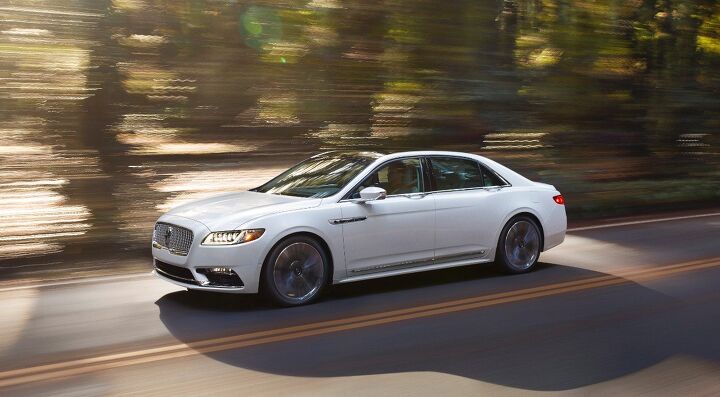
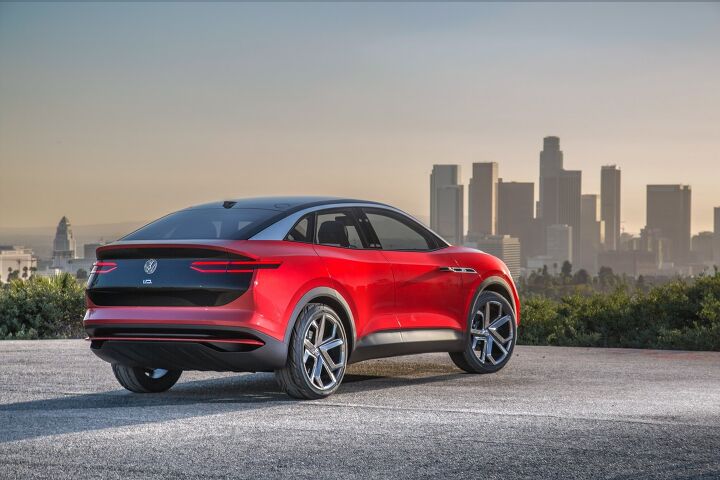






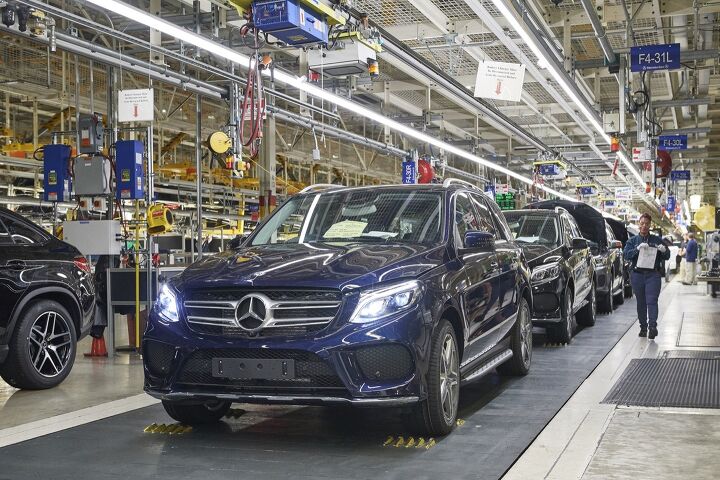


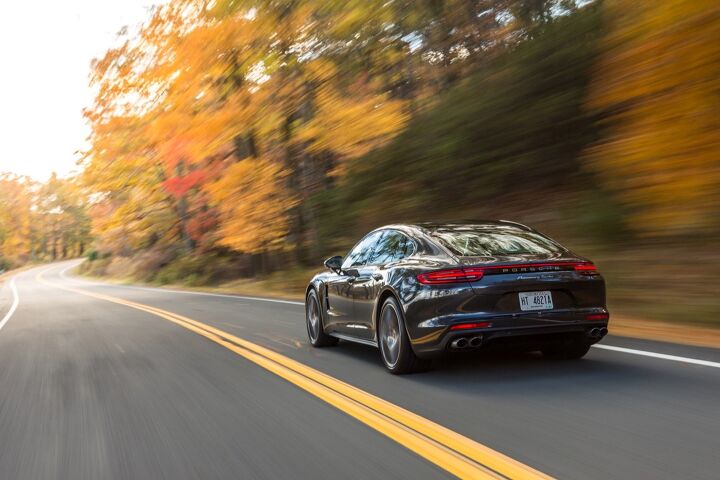




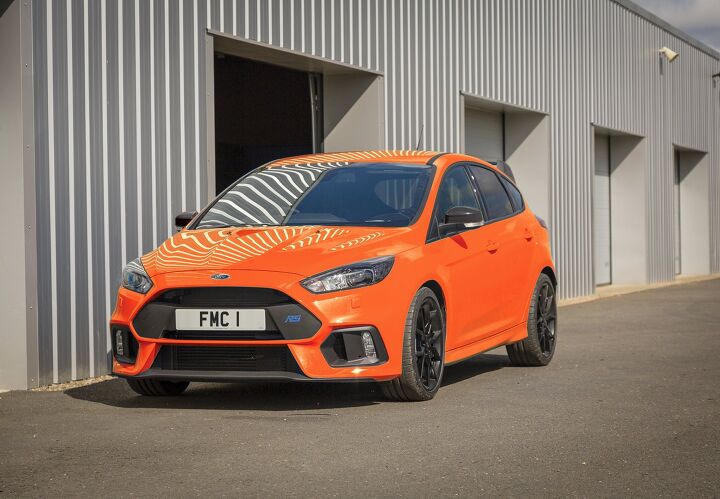


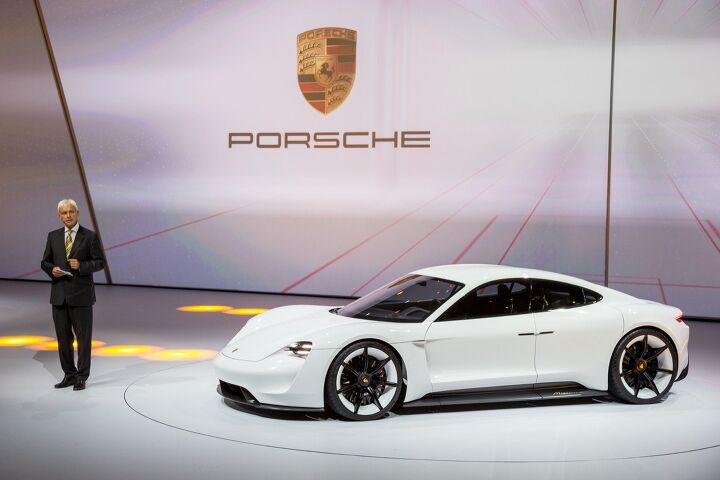
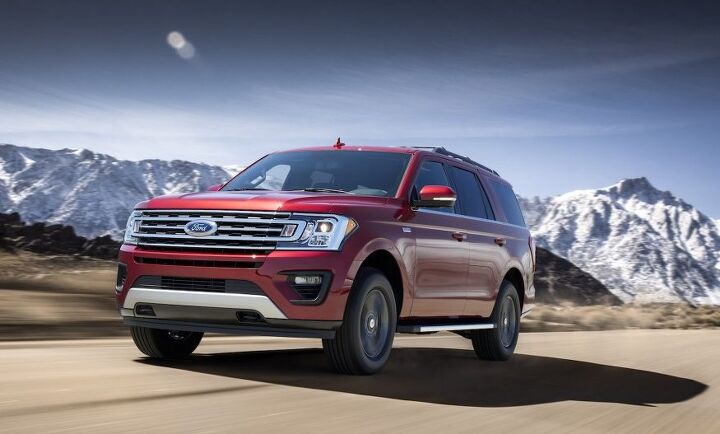




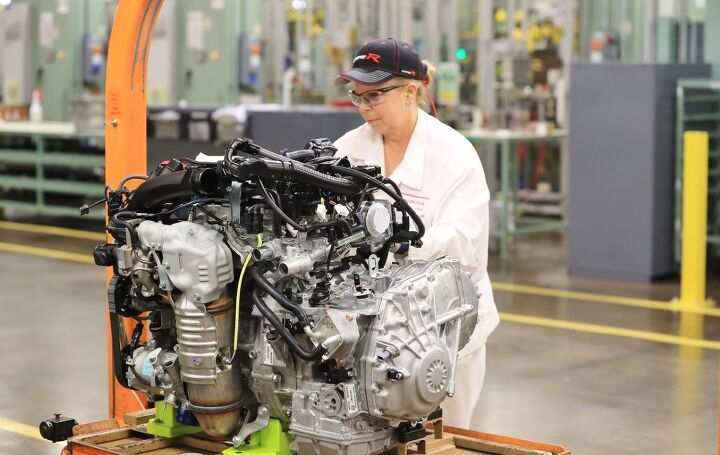
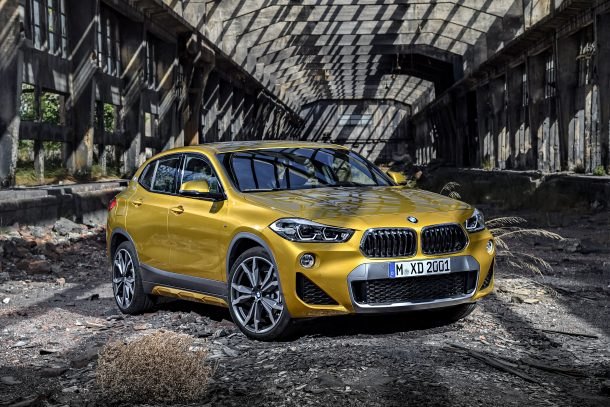
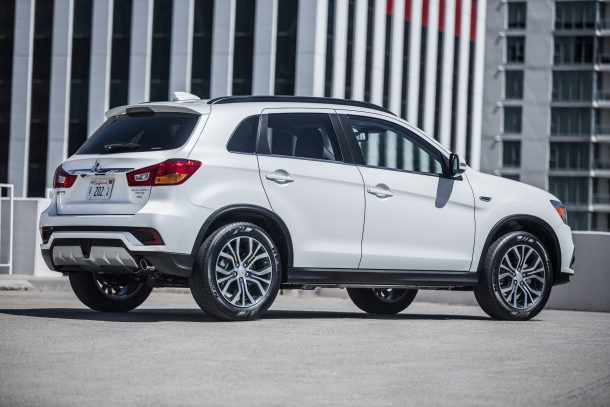
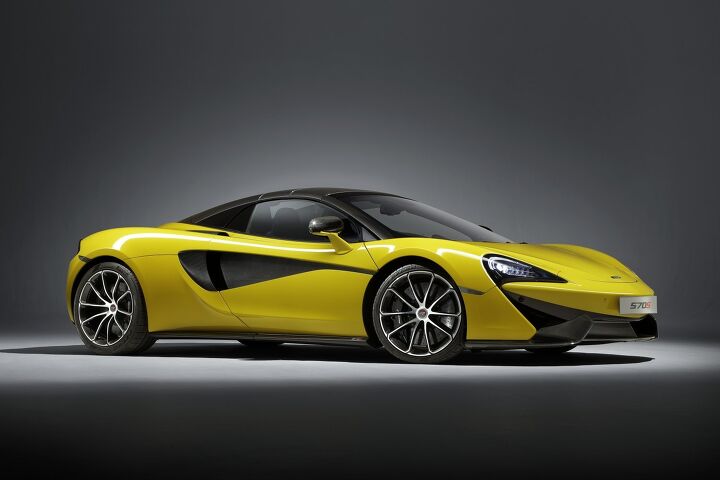
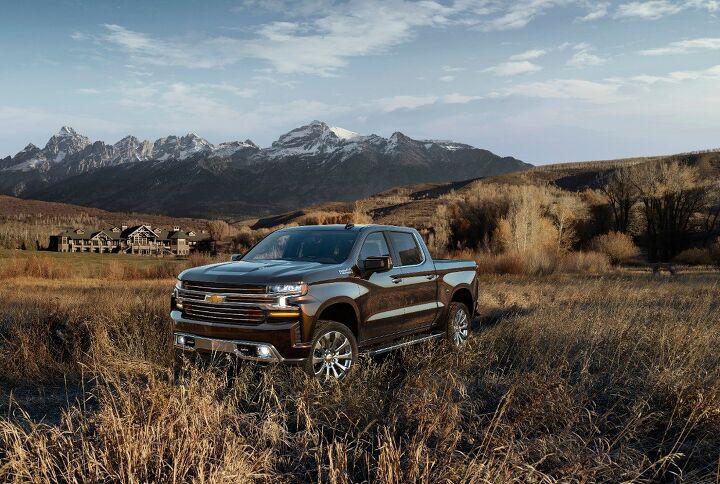




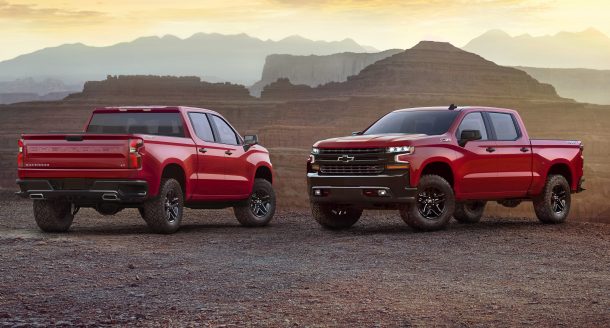
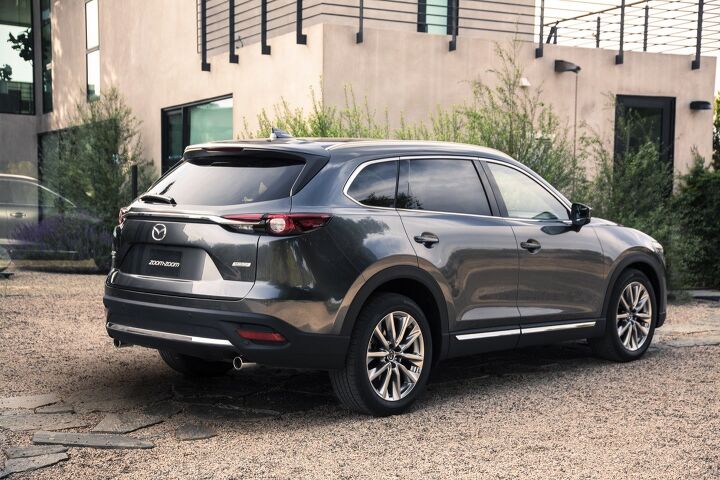



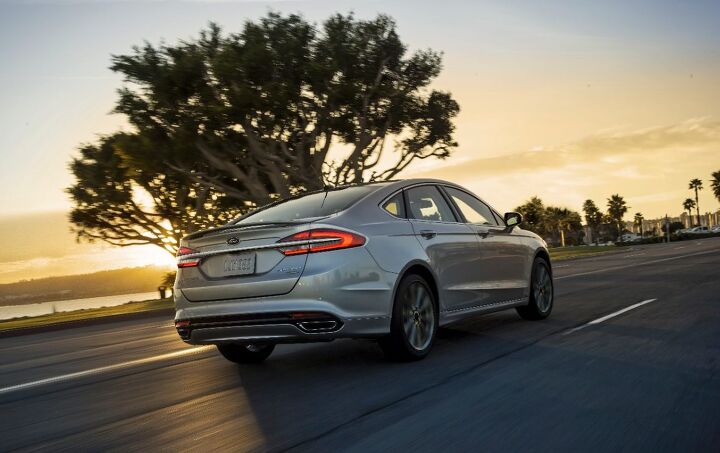

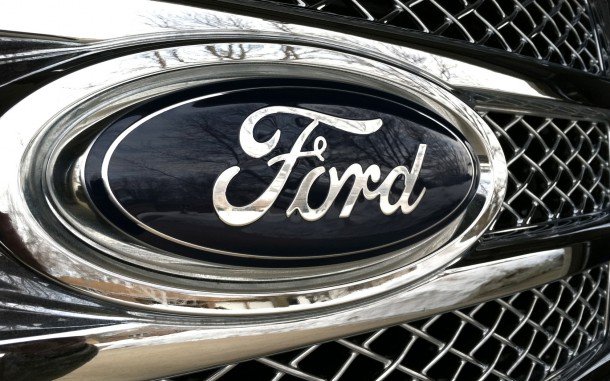

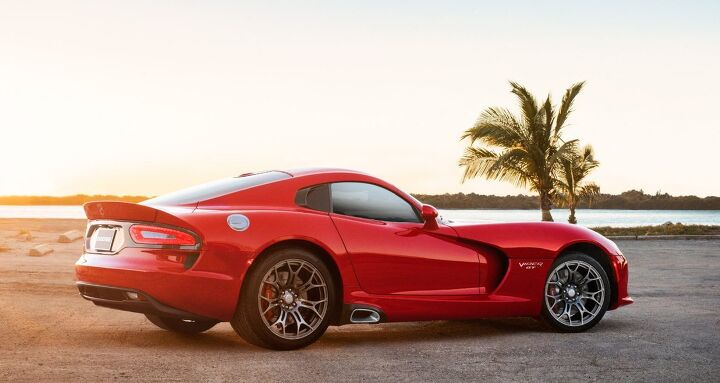

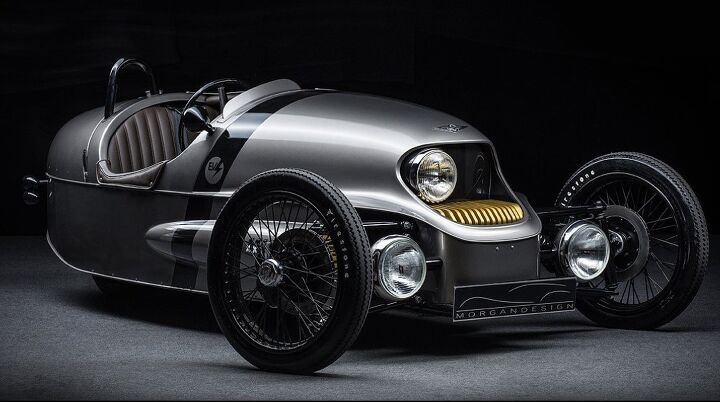


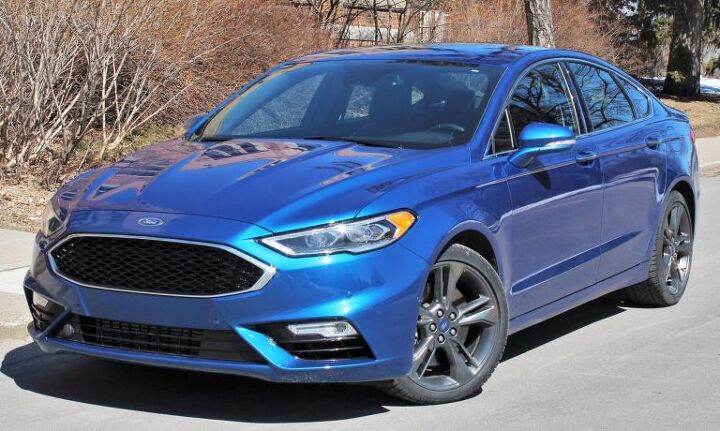
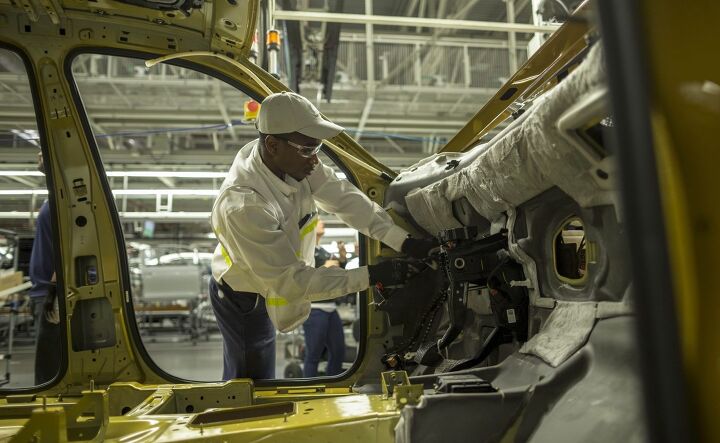


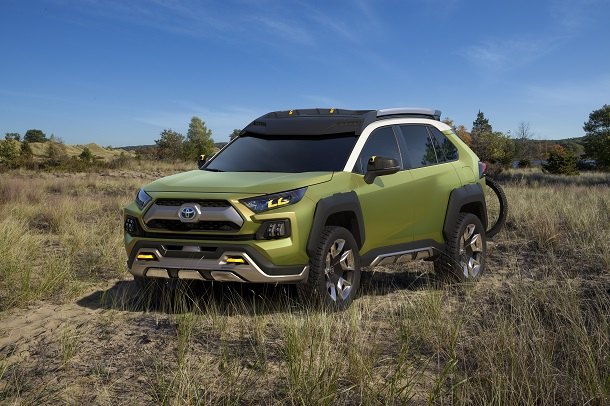
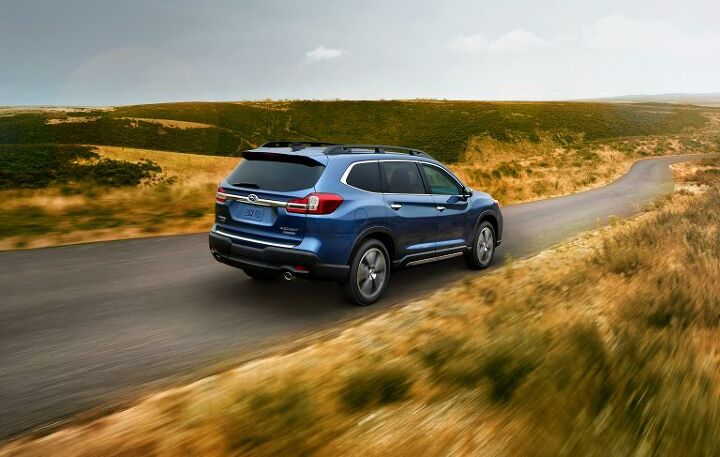














Recent Comments